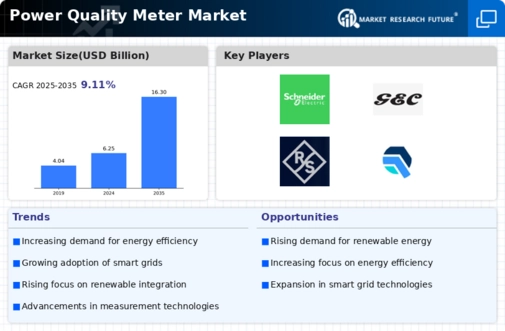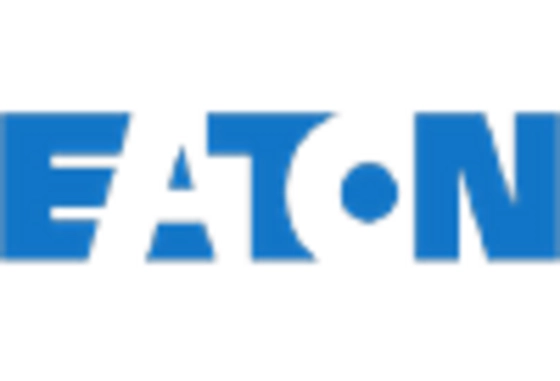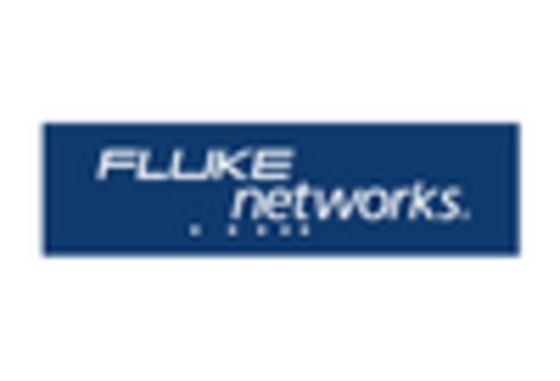Regulatory Pressures and Standards
Regulatory pressures and standards are playing a crucial role in shaping the Power Quality Meter Market. Governments and regulatory bodies are increasingly implementing stringent regulations aimed at ensuring power quality and reliability. These regulations often require organizations to monitor and report their power quality metrics, thereby creating a demand for power quality meters. For example, compliance with international standards such as IEEE 519 is becoming mandatory for many industries. This regulatory landscape is compelling organizations to invest in power quality monitoring solutions, which in turn is expected to drive the growth of the Power Quality Meter Market as companies seek to meet compliance requirements.
Rising Demand for Energy Efficiency
The Power Quality Meter Market is experiencing a notable surge in demand driven by the increasing emphasis on energy efficiency across various sectors. Organizations are increasingly recognizing the importance of monitoring power quality to reduce energy waste and optimize operational costs. According to recent data, energy efficiency measures can lead to savings of up to 30 percent in energy consumption. This trend is particularly evident in industrial and commercial applications, where power quality meters are utilized to identify inefficiencies and mitigate power disturbances. As energy costs continue to rise, the adoption of power quality meters is likely to become more prevalent, thereby propelling the growth of the Power Quality Meter Market.
Expansion of Renewable Energy Integration
The expansion of renewable energy integration is significantly influencing the Power Quality Meter Market. As more renewable energy sources, such as solar and wind, are integrated into the power grid, the need for effective power quality management becomes increasingly critical. Renewable energy sources can introduce variability and instability into the power supply, necessitating the use of power quality meters to monitor and manage these fluctuations. The International Energy Agency has reported that renewable energy capacity is expected to grow substantially in the coming years, which will likely drive the demand for power quality meters. This trend indicates a robust growth trajectory for the Power Quality Meter Market as stakeholders seek to ensure the reliability and stability of power systems.
Growing Awareness of Power Quality Issues
There is a growing awareness of power quality issues among consumers and businesses, which is positively impacting the Power Quality Meter Market. As the reliance on sensitive electronic equipment increases, the need for reliable power quality becomes paramount. Poor power quality can lead to equipment malfunctions, increased downtime, and financial losses. Consequently, organizations are investing in power quality meters to monitor and improve their power systems. Recent studies indicate that businesses that implement power quality monitoring can reduce operational disruptions by up to 25 percent. This heightened awareness is likely to drive the adoption of power quality meters, further fueling the growth of the Power Quality Meter Market.
Technological Advancements in Metering Solutions
Technological advancements are significantly influencing the Power Quality Meter Market, as innovations in metering solutions enhance the capabilities and functionalities of power quality meters. The integration of advanced features such as real-time monitoring, data analytics, and cloud connectivity is becoming increasingly common. These innovations allow for more precise measurements and better insights into power quality issues. For instance, the introduction of smart meters has revolutionized the way power quality is assessed, enabling utilities and businesses to respond swiftly to power quality disturbances. As technology continues to evolve, the Power Quality Meter Market is expected to expand, driven by the demand for more sophisticated metering solutions.

















Leave a Comment